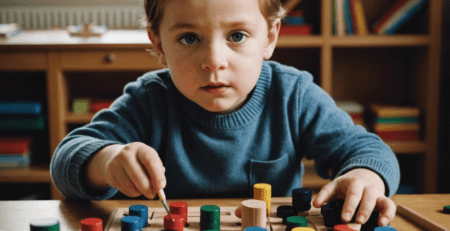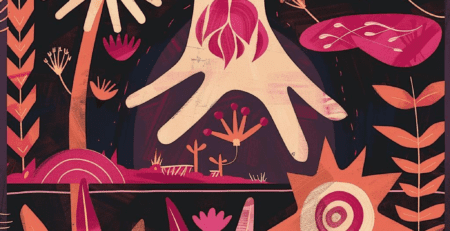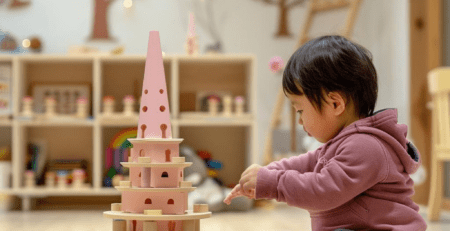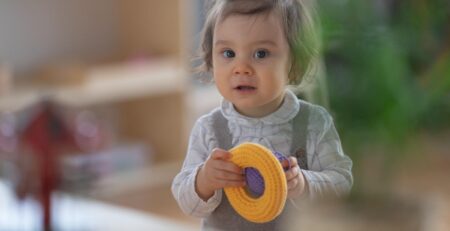
5
Montessori’s Approach to Cultivating Creativity
Step into the world of Montessori education and discover how it cultivates creativity in young minds. The Montessori approach to learning is not just about academic achievement, but also about nurturing the creative spark within each child. In this article, we will explore the unique methods and principles of Montessori education that encourage creativity, and how these practices can benefit children both in and out of the classroom. Join us as we delve into the world of Montessori and uncover the magic of creativity within its walls.
Table of Contents
- What is Montessori Education?
- Promoting a Creative Environment
- Freedom Within Limits
- Encouraging Self-Expression
- Nurturing a Love for Learning
- The Role of Montessori Teachers
- Q&A
- To Conclude
What is Montessori Education?
Montessori education is a unique approach to learning that emphasizes independence, freedom within limits, and a respect for a child’s natural psychological, physical, and social development. Founded by Dr. Maria Montessori in the early 20th century, this method of education has gained popularity for its focus on fostering a child’s innate creativity and curiosity.
One of the key aspects of Montessori education is its emphasis on cultivating creativity. In a Montessori classroom, children are encouraged to explore their interests and passions, which allows them to develop a strong sense of creativity and innovation. Through hands-on learning experiences and the freedom to choose their own activities, children are able to think critically and creatively, problem-solve, and express themselves in unique ways. This approach to education not only helps children develop important skills for future success but also fosters a love for learning and a sense of confidence in their own abilities.
Promoting a Creative Environment
In a Montessori setting, is essential to nurturing the development of young minds. Montessori education emphasizes the importance of fostering creativity and imagination in children, which is achieved through a variety of strategies and practices.
One way that Montessori cultivates creativity is by providing children with open-ended materials and activities that allow for exploration and self-expression. From art supplies to building blocks, the environment is carefully curated to inspire curiosity and innovation. Additionally, teachers in a Montessori classroom encourage students to think outside the box and pursue their own interests, fostering a genuine passion for learning.
Unleashing creativity in a Montessori environment has proven to unlock the full potential of children, also, it builds a platform for them to learn at their own pace and on their own level. Creativity is essential for personal development and contributes to a child’s ability to think critically and solve problems. By cultivating creativity, Montessori education provides a solid foundation for success in both academic and personal pursuits, fostering a lifelong love of learning.
Freedom Within Limits
Montessori education is based on the principle of . This concept encourages children to have the freedom to explore and learn at their own pace, within the structure and boundaries of the classroom. By providing a carefully prepared environment, Montessori schools cultivate creativity in young minds through independent learning and self-directed activities. When children are given the freedom to choose their activities and work at their own pace, they develop a sense of responsibility, self-discipline, and creativity.
Montessori classrooms are designed to encourage creativity by providing a variety of hands-on learning materials and activities that stimulate children’s curiosity and imagination. The freedom to explore and manipulate these materials fosters creativity, problem-solving skills, and critical thinking. In addition, the Montessori approach emphasizes the importance of allowing children to make choices, follow their interests, and express themselves creatively through art, music, and movement. By nurturing creativity within the framework of discipline and order, Montessori education equips children with the skills they need to be independent, innovative thinkers in the future.
Encouraging Self-Expression
At Montessori, we understand the importance of in children from a young age. We believe that cultivating creativity is a vital part of a child’s development, and it is something that we actively promote in our classrooms. Our approach is designed to provide children with the opportunity to express themselves in a variety of ways, whether it be through art, music, or movement. By doing so, we aim to foster a love for creativity that will stay with them throughout their lives.
One of the key ways that we encourage self-expression is by providing children with the freedom to explore and discover their own interests. We believe that every child is unique and has their own individual talents and passions, and it is our role to support and nurture these. Through activities such as open-ended art projects, imaginative play, and group discussions, we aim to create an environment where children feel comfortable expressing themselves in whatever way feels natural to them.
Nurturing a Love for Learning
Montessori education is renowned for its ability to nurture a love for learning in young children. One of the key aspects of this approach is its focus on cultivating creativity. In a Montessori classroom, children are encouraged to explore, discover, and learn at their own pace, allowing them to develop a deep sense of curiosity and creativity.
Here are some ways in which Montessori education cultivates creativity:
- Freedom to explore: Montessori classrooms provide children with the freedom to choose their activities and explore different materials, fostering a sense of independence and creativity.
- Hands-on learning: Through hands-on activities and sensory experiences, children are able to engage with the world around them in a creative and meaningful way.
- Encouragement of individuality: Montessori education celebrates each child’s unique abilities and encourages them to express themselves creatively.
Montessori education understands that creativity is essential for success in the modern world, and strives to provide children with the skills and confidence they need to become creative, innovative thinkers. By and fostering creativity, Montessori education sets children up for a lifetime of success and fulfillment.
The Role of Montessori Teachers
Montessori education is known for its emphasis on cultivating creativity and independence in children. is crucial in fostering these qualities in young learners. Montessori educators play a unique role in guiding children through their learning journey, focusing on individualized instruction and hands-on learning experiences.
Montessori teachers are trained to create an environment that encourages children to explore and discover their interests. They act as facilitators, observing and guiding children as they engage in activities that promote creativity, critical thinking, and problem-solving skills. extends beyond traditional classroom instruction, as they strive to instill a love for learning in their students and nurture their natural curiosity.
When it comes to creativity, Montessori teachers are instrumental in creating a nurturing and inspiring environment for children to express themselves. Through a combination of open-ended activities, artistic exploration, and collaborative projects, Montessori educators help children develop their creative skills and encourage them to think outside the box. By embracing the role of a mentor and guide, Montessori teachers empower children to become independent thinkers and lifelong learners.
Q&A
Q: How does the Montessori approach to education cultivate creativity in children?
A: The Montessori method encourages independence and self-directed learning, allowing children to explore and discover their interests on their own. This freedom fosters creativity and allows children to think outside the box.
Q: What role do Montessori materials and activities play in nurturing creativity?
A: Montessori materials are designed to be open-ended and allow for multiple uses, stimulating children’s imagination and problem-solving skills. The activities are hands-on and promote exploration, critical thinking and creativity.
Q: How does the Montessori environment support the development of a creative mindset?
A: The Montessori environment is calm, organized and aesthetically pleasing, providing a serene space for children to focus and engage in creative activities. The mixed-age classrooms also encourage collaboration and peer learning, fostering creativity through social interaction.
Q: How do Montessori teachers encourage and guide creativity in children?
A: Montessori teachers act as facilitators, observing and assessing children’s individual needs and interests, and providing the necessary guidance and resources to support their creative development. They offer encouragement and positive reinforcement to inspire children to express themselves freely.
Q: What are some specific examples of how Montessori education promotes creativity?
A: Montessori education integrates art, music, and movement into the curriculum, offering children the opportunity to explore their creative abilities. Additionally, the emphasis on practical life skills allows children to develop problem-solving and creativity through real-life tasks and experiences.
To Conclude
In conclusion, Montessori education cultivates creativity by providing a nurturing and stimulating environment for children to explore and express their imagination. By fostering independence, embracing individuality, and promoting hands-on learning, Montessori schools empower students to think outside the box and develop their own unique creative abilities. Through the Montessori approach, children are encouraged to embrace their artistic, scientific, and innovative potential, ultimately preparing them to become imaginative and innovative individuals in the future. With Montessori, the possibilities for creativity are endless. So let’s continue to foster creativity in our children and watch them flourish into the creative minds of tomorrow.










